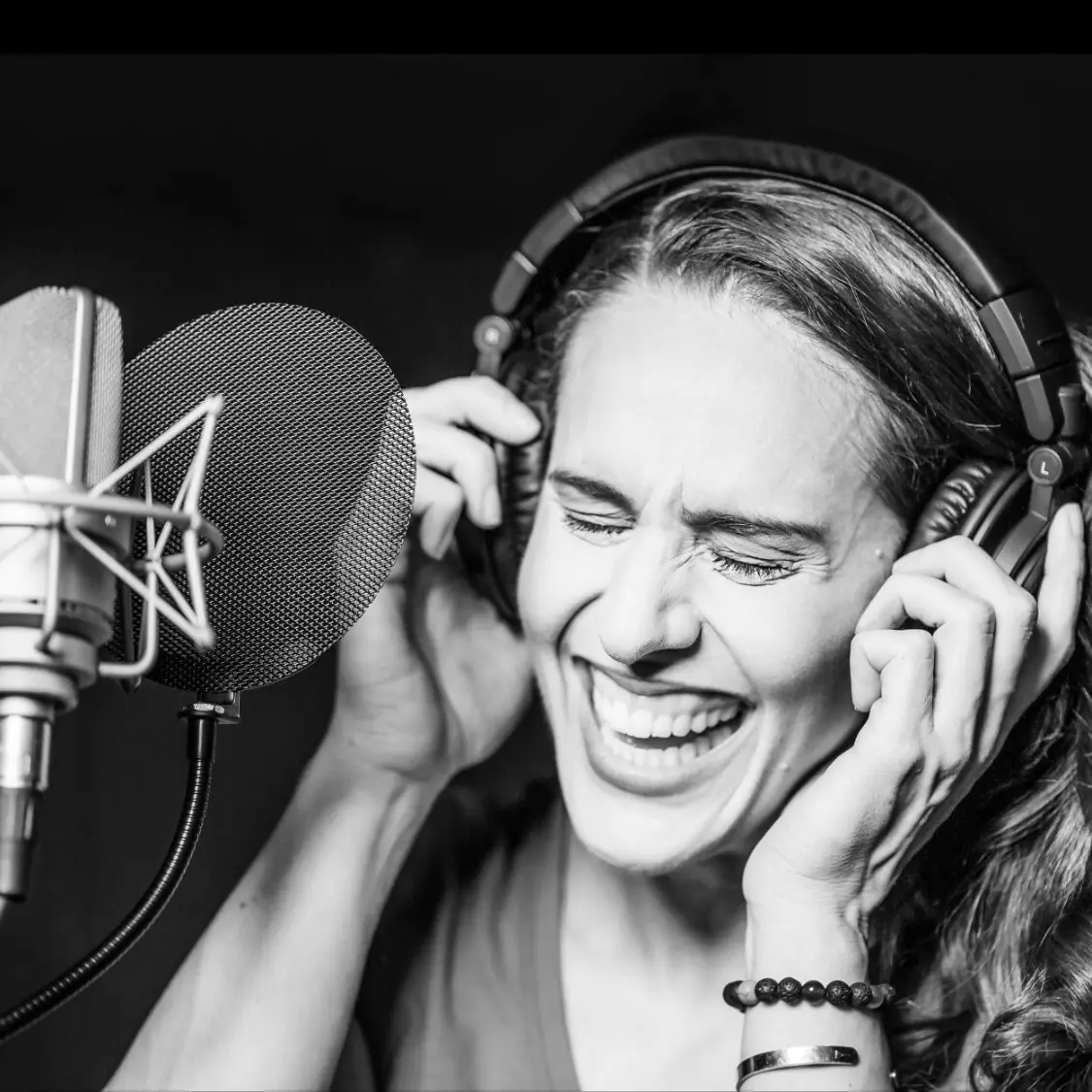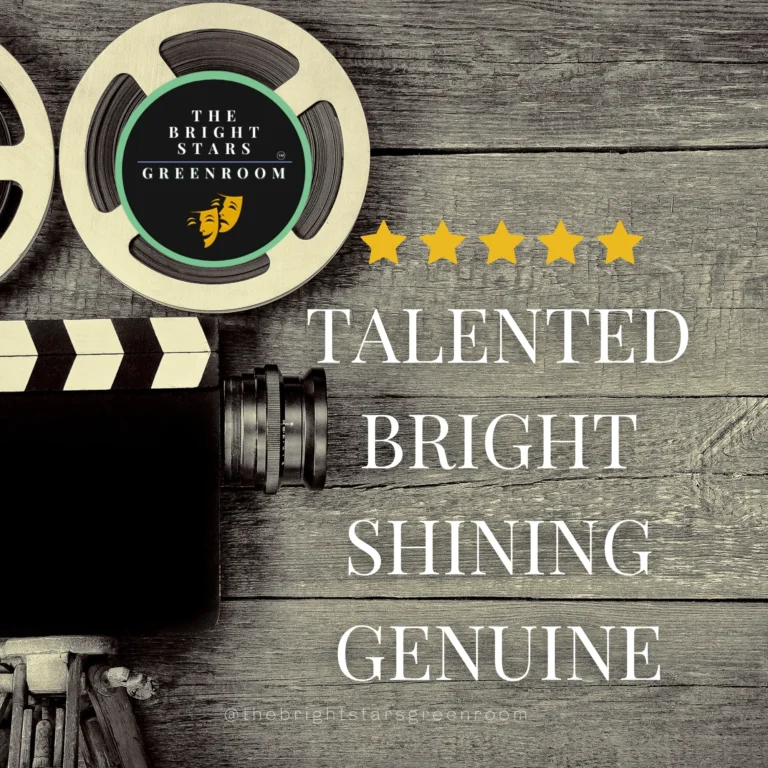To pay-to-play, or not. That is the question!

If you’re a working actor or voice‑over artist, you know the daily grind… Auditions, self‑tapes, equipment upgrades, coaching, headshots, and so much more.
Add to that list: The Rise of AI and the costly pay‑to‑play casting platforms. Platforms that promise access to job submissions, visibility, and opportunity, but for many of us, the cost is more than just money.
Now before we get started, I want to be crystal clear: I got my start in voiceover through pay-to-play casting sites. For many performers (especially those without an agent), they can be a valuable entry point and a way to dip your toes into the industry!
I’m not here to knock the concept entirely. These platforms have helped countless actors get experience, build confidence, and land real work.
But as someone who now works full-time in this field, I think it’s important to talk honestly about what these platforms truly cost. Not just financially, but mentally and emotionally for the working actor.
Because while pay-to-play casting sites can open doors, they can also become a heavy, ongoing investment with no guaranteed return.
Pay-to-Play: The Reality of Actor Expenses

Every actor knows that the “cost of doing business” is real. You pay for headshots, you invest in a good mic or home studio setup, you build a demo reel. These are investments we make because we believe in our craft and know that professional quality matters.
But then there are the fees that feel less like investment and more like a gate… subscription plans, “upgrade your profile to be seen,” submission credits, priority uploads. These are the sort of burdens that accompany pay‑to‑play casting platforms, and they shift the burden of finding work onto the actor, rather than the production or casting side.
What Are Pay‑to‑Play Casting Platforms?
In short, a pay-to-play sites are services where actors or voice‑over artists pay for access to audition. Whether that’s submitting more auditions, standing out in search results, or unlocking extra features.
Some platforms offer a free tier, but the hidden ‘push’ is often that you’ll be “better seen” or “ranked higher” if you pay. According to one detailed article in VARIETY, a platform charged actors hundreds of dollars for subscription upgrades, while allegedly giving “paid subscribers” preferential sorting.
The problem is that we’re asked to pay for the chance to audition. In the professional landscape, legitimate auditions don’t usually require talent to pay just to be seen, but here’s the kicker: you usually have to have an agent or manager to help get the chance to audition.
The Good, the Bad & the Ugly
THE GOOD: Some platforms genuinely offer tools, flexibility, and real casting leads. They can help actors without representation self‑submit, manage their materials, and streamline self‑tapes. For some, this is invaluable (especially in the beginning when you have no clue how to get started.)
THE BAD: Even when legit, many actors find the return on investment extremely slim. Large subscription costs plus heavy competition = countless submissions with no callback. The “investment” doesn’t always yield work, but the expenses still mount.
THE UGLY: Platforms that cross the line into “you have to pay to be considered” risk being exploitative. Legal complaints have been filed in California against sites accused of essentially charging actors for access to auditions, which may violate the Fee‑Related Talent Services Law. You can read that article at Law Commentary
And Then… AI Walks In

As if the financial burden of pay-to-play casting platforms wasn’t enough, there’s another growing challenge: the rise of AI-generated voiceovers.
Voice models, trained on massive datasets (often pulled without consent), are now being used to replace real human performers at a fraction of the cost, or worse, using a synthetic version of a performer’s own voice.
Now imagine this:
You’re paying monthly fees just to audition…
And the job goes to a machine that doesn’t need health insurance, doesn’t take breaks, and never misses a deadline.
This isn’t fear-mongering, it’s already happening and we are having to fight back, continually.
Studios and companies are being sold a fantasy: that AI will “streamline” casting. But here’s what they’re missing:
- AI can’t interpret subtle emotion or shift energy mid-scene
- It can’t collaborate or improvise in the moment
- And it certainly can’t connect with an audience on a human level
Pair all of that with a landscape where real performers are being charged just to be considered, and you have a system where actors are investing more, earning less, and being slowly pushed to the margins. It’s a real-life horror movie for us entertainers.
What This Means for Voice‑Over Artists and Actors

As a voice‑over artist / an actor who also does voice work, the dynamics are similar, if not amplified. We invest in home studios, demo reels, and vocal training. Then, on top of that, some platforms ask for fees just to submit or to get “better exposure.” That means an actor might be investing in both craft and platform access simultaneously.
And yet the system subtly shifts the cost of discovery onto us. Rather than a casting company paying for their audition process, we (the talent) are asked to pay. When you add up recurring monthly fees, demo updates, equipment, time spent submitting, and self‑tape production costs, it becomes clear: these expenses rack up fast.
The Hidden Emotional Cost
Beyond money, there’s something less visible but equally real: fatigue, frustration, and burnout. When you’re constantly submitting, hoping, and waiting (and paying to do so with the money you don’t have), the emotional weight builds. As one actor I saw on Reddit phrased it:
“…most of the legit stuff goes through paid casting websites… the subscription and fee prices are obviously gouging to a degree…”
That frustration isn’t just anecdotal, it’s lived by many of us. And when we’re told that paying more gives better “visibility,” the magic of auditioning (that spark of possibility) can start turning into a process of mechanized submission, chasing algorithms rather than roles.
Talent investment is non-negotiable for entertainers.
Working actors who are serious about their craft understand that. We pour time, money, and heart into what we do. But sometimes, you can’t help but wonder if these platforms really supporting the actors… or just finding another way to profit off an already successful system.
Why Companies Should See This Too

If you’re a casting director, production company, studio, or brand looking to hire actors or voice‑over talent, this matters genuinely. Here’s why:
- Quality suffers: When funnels prioritize paid‑profiles over raw talent, you risk missing the genuine gems: those who may lack budget but have talent and passion.
- Ethical and legal concerns: Some pay‑to‑play norms may be legally questionable or commercially exploitative. Being aware is smart business. Is the talent walking away with the actual payment you budgeted specifically for them on this pay-to-play casting site?
How I Approach It as a Professional Performer
As an actor and voice‑over artist myself, I’ve chosen to invest my talent, my time, and my heart into every project rather than paying for visibility. I bring to the table not just a voice or a look, but decades of experience, professional equipment, and a deep understanding of storytelling.
If you’re looking to hire a voice‑over artist or cast a professional actor who understands both the business and the art, I’m here to deliver. I don’t believe in charging you to audition me, I believe in delivering results.
Whether you need voice‑over work for commercial, animation, games, or prefer an on‑camera presence, I’m ready and happy to bring your vision to life!
For booking or demo inquiries, please contact thatgirl@simplyshannonscott.com or visit: www.simplyshannonscott.com
Want to connect for immersive performance, motion capture, or mermaid work? I’m available for that too – yes, even mermaid!
Practical Tips for Actors Navigating Pay‑to‑Play Platforms
So actors, should you pa-to-play at the end of the day? That decision is up to you. Again, it’s how I got started in my voiceover journey more than 8 years ago. Take a deeper look:
- Audit your expenses: Track what you spend on subscriptions, auditions, self‑tape equipment, and headshots.
- Evaluate ROI: Are you submitting widely but rarely getting callbacks? Consider reducing platform fees or focusing on targeted opportunities.
- Lean on free or low‑cost options: Some legitimate casting platforms or local networks offer free submissions or lower costs.
- Refine your craft: Investing in your voice, performance, and reel pays longer‑term than just paying for audition access.
- Network outside the platform: Real connection that you find in festivals, workshops, or retreats can lead to work organically, and that leads to referrals more than paid platforms sometimes.
Nobody’s journey is the same, and you will ultimately have to decide if it’s the right decision for YOU.
Bringing It Back Full Circle
Yes, the industry evolves. Yes, digital self‑tapes, online submissions, and casting software are now part of how we work. But the heart of it remains: talent, authenticity, and connection. When the audition process becomes pay‑to‑play instead of opportunity‑driven, we risk losing the magic.
And I believe we should protect that magic. Not just for ourselves, but for the future of the industry!
If you’re a studio, brand, or creative team, I invite you to think beyond the shortcut.
Hire real voice talent. Invest in people. Choose emotion over automation.
I’m a professional voice actor for hire who brings not only range and reliability, but heart, collaboration, and the ability to connect with your audience in a way AI never can.
Whether you’re casting for animation, commercial, game, narration, or immersive work, I’m ready to bring your story to life.
Learn more, view my demos, or contact me at www.simplyshannonscott.com

